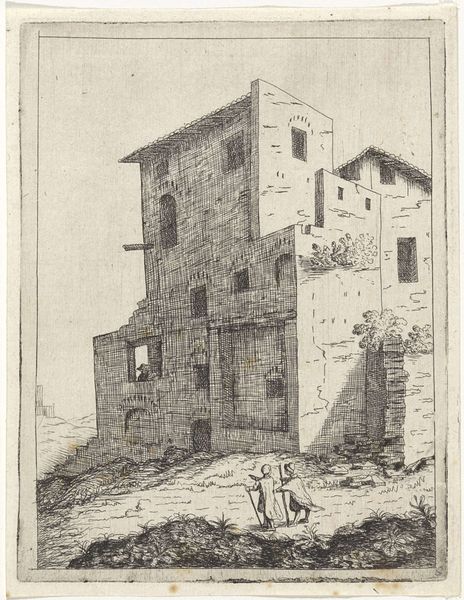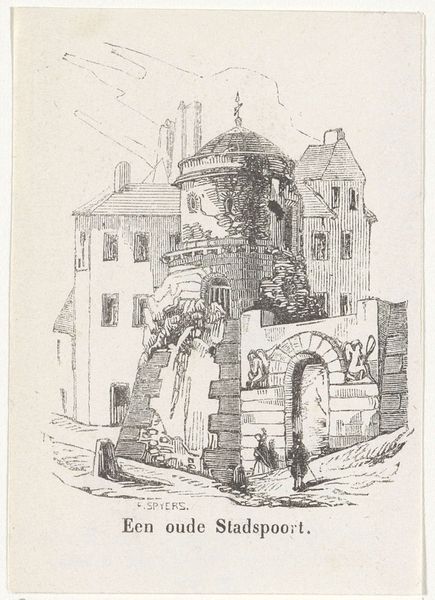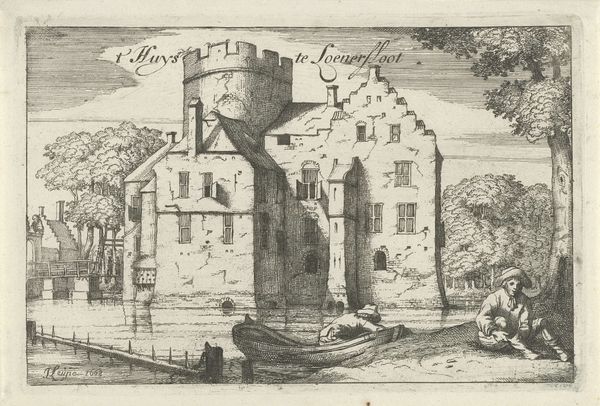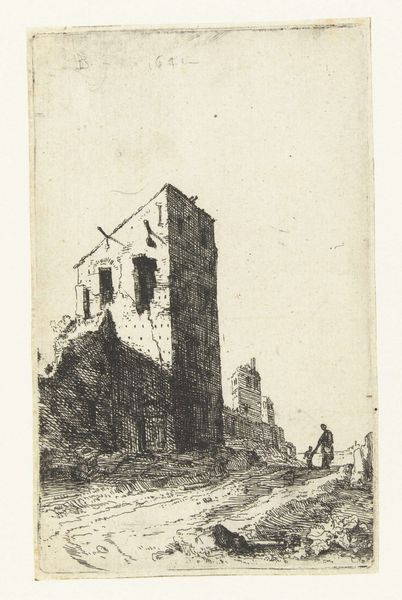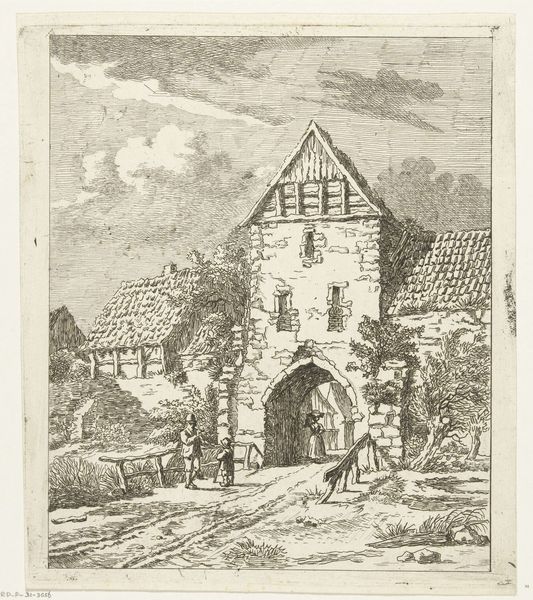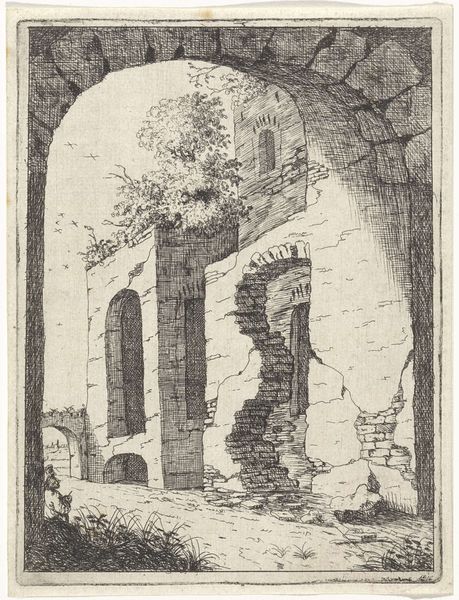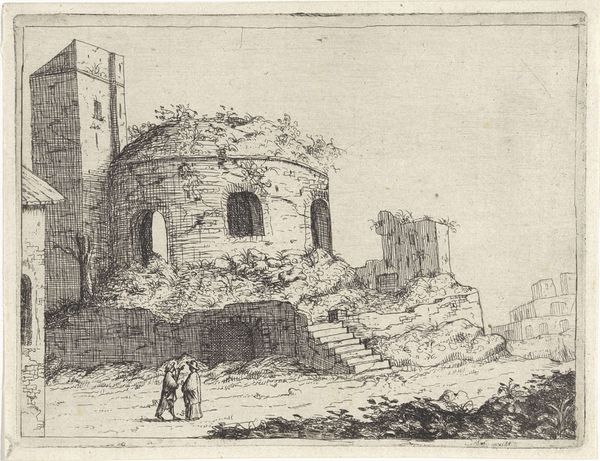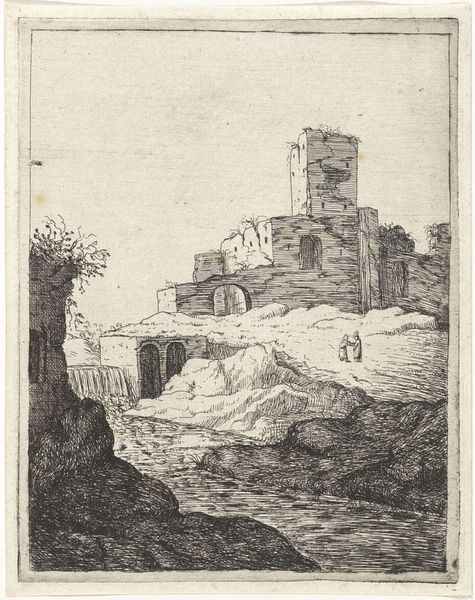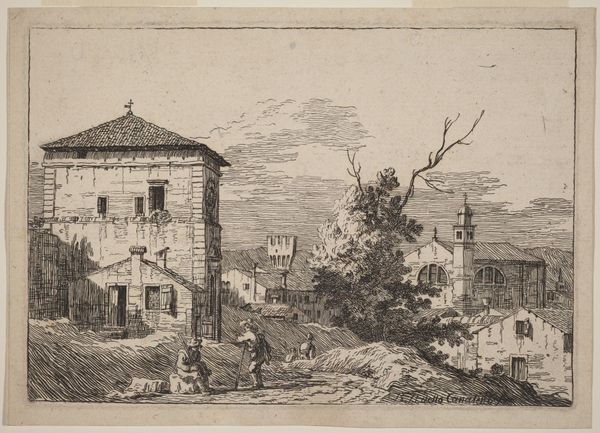
drawing, print, etching, paper, ink, architecture
#
architectural sketch
#
landscape illustration sketch
#
drawing
#
aged paper
#
toned paper
#
narrative-art
#
baroque
# print
#
pen sketch
#
etching
#
old engraving style
#
sketch book
#
landscape
#
paper
#
personal sketchbook
#
ink
#
pen-ink sketch
#
pen work
#
genre-painting
#
architecture
Dimensions: height 123 mm, width 94 mm
Copyright: Rijks Museum: Open Domain
Curator: Before us is "Vervallen landhuis met een toren," or "Derelict Country House with a Tower," an etching rendered in 1648 by M. Schaep. The printwork, exhibiting black ink on paper, gives us insight into the genre paintings during the Baroque era. Editor: What immediately grabs me is the tangible sense of decay. You can almost feel the rough texture of the crumbling brick and weathered wood. It’s less a romantic ruin, and more a portrait of entropy. Curator: Absolutely, and considering its creation during the tail end of the Dutch Golden Age, one wonders what commentary the artist might have been trying to portray of societal decline. Note, too, the figure on the path -- almost swallowed by the dilapidation. Editor: The artist’s choice of etching really lends itself to this feeling, doesn’t it? That fine line work captures detail, but also a certain fragility. Each scratch on the plate is like a scar, etching into the narrative and speaking to a slow and relentless decay. Curator: Speaking of marks and "scars," what narratives of class and power might this work engage? Land ownership during this era in the Netherlands was so fraught. Is this land lost, stolen, squandered? How do people relate to a building like this within an economy of material use? Editor: Good point. And think about what materials the artist could source. Ink, paper, acid resistant coating. A single figure treks, with rod over the land and before architecture. This image makes us ask; what did they do? The work has many meanings with those decisions. Curator: Exactly! Considering materiality gives us such clear social-historical framework. Schaep wasn’t just depicting a pretty picture of entropy; Schaep captured society’s ills through something as common and accessible as land and etching. Editor: Yes, it speaks to art making. Considering the choice of medium, how these things are assembled and reassembled. I also love how such basic, inexpensive and commonplace art could carry with it so much social history and wealth building. Curator: A reminder that the “material” in this case are never really separate from identity. Editor: Indeed. It transforms how we consider landscape.
Comments
No comments
Be the first to comment and join the conversation on the ultimate creative platform.
